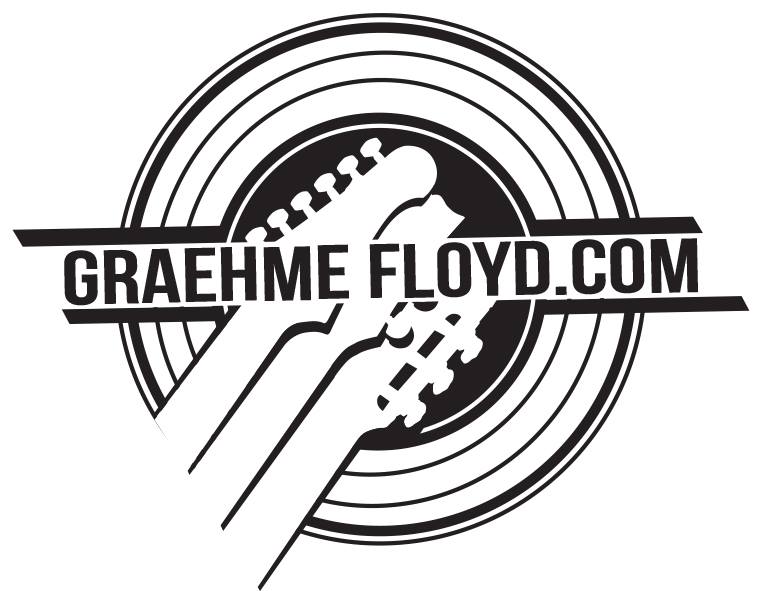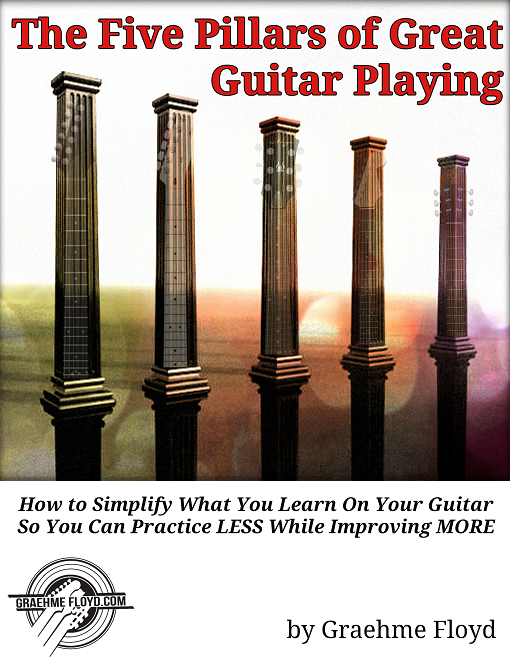
I remember the first time I learned what improvising was…
It was 2002. I was a nerdy 16-year-old kid in high school and had been playing guitar for about 3 years. At that time, Yngwie Malmsteen was my god; he was all I listened to, learned to play, and focused on when it came to music. Now, just like every other guitar player out there, as much as I wanted to, I couldn’t play Yngwie stuff to save my life, but I spent hours doing my best to try and had managed to cobble together a few working ideas from the master.
While working on Yngwie’s stuff, I managed to get my hands on a copy of his instructional video released by Hot Licks. It certainly helped me out with learning a number of his tunes, but other than his sheer technical virtuosity, what astounded me were his improvised examples. I couldn’t believe what I was hearing coming out of my speakers – it was amazing! And, to find out that he played without working them out ahead of time, without repeating it a thousand times over until it was perfect blew my mind. It was that night I began trying to improvise for the first. I stayed up far too late with the tired, but trusty Minor Pentatonic scale. I had discovered a brand new world of guitar and it was exciting!
After a few years, I had managed to take my improvisational skills far beyond its humble beginnings. Through tireless efforts, I could improvise anywhere on the fretboard and had amassed an arsenal of killer rock and metal licks from all my favorite players – Yngwie included.
 However, there was a weakness in my soloing, an Achilles heel that had the ability to thwart my soloing efforts. I knew that the only way I could improvise well was if the music I played over was relatively simple – it staying in one key or could be approached using one scale. If the music stepped away from this – I was screwed. I had no idea how to keep going if the key changed or if there was unexpected chords in the progression. Within the rock and metal genre, this was pretty rare, so I didn’t worry about it too much.
However, there was a weakness in my soloing, an Achilles heel that had the ability to thwart my soloing efforts. I knew that the only way I could improvise well was if the music I played over was relatively simple – it staying in one key or could be approached using one scale. If the music stepped away from this – I was screwed. I had no idea how to keep going if the key changed or if there was unexpected chords in the progression. Within the rock and metal genre, this was pretty rare, so I didn’t worry about it too much.
It was around this time that my musical training began to shift towards playing jazz and it was this change that completely exposed just how weak my improvising really was. Unlike rock and metal, jazz freely moves between keys on a regular basis, sometimes as much as every bar. Not only could I not handle these changes, but I could barely play anything at all. I knew something was wrong with my approach, so I buckled down on my practicing to try and get it sorted out.
There were dozens of approaches that I tried to make it work. Scale shapes, arpeggio patterns, famous licks, memorizing prelearned lines for common chord progressions, developing my ability to hear the changes and play by ear. All of it moved me in the right direction, but not one of them really solved my problem completely – I still couldn’t comfortably improvise over even the simplest jazz tunes.

There were a few times when I toyed with the idea that maybe I just wasn’t smart enough to play jazz, that maybe I was just better suited to play rock and metal, and to just leave it at that. After all, not everyone has to be able to play everything, right? Although this may be true, there was a part of me that just wasn’t satisfied with leaving things this way. Everything else I had tried to learn on the guitar had ended in success of some kind. Even the hardest, most technical metal tunes could be learned as long as you spent enough time on them. So, I figured that maybe all I needed was more time, more practice, more exposure, and I then it would all click.
Well, eventually it did, but not in the way that I had expected. In short, what solved my improvising problem was my own awareness of the notes on the guitar.
From the beginning learning the guitar, the name of the notes across the fretboard had been a mystery to me. I came to the guitar with 4 years of piano under my belt – I knew what notes were, how to read, and even a little theory. But the fretboard was so vast, so confusing – it seemed insurmountable. Every time I tried learning the notes on the guitar I stopped because I would end up more frustrated by trying to learn the notes I was by not knowing them in the first place. Plus, there were so many great players out there that didn’t know the notes and yet they were great guitarists, so my conclusion was that I didn’t need to know them either. Unfortunately, that decision was unfounded.
All of my attempts at improving my improvising skills (ears, patterns, shapes, licks) had been my way of avoiding my own lack of a fundamental understanding of my guitar. I was trying to be clever and out think the problem so that I didn’t have to learn the notes. It didn’t work.
 So what finally changed? How was it that I ended up learning the notes? By the time I realized that I knew all the note names on the guitar, I had been playing seriously for about 10 years. This included practicing endlessly, learning thousands of songs, working with a few dozen bands, performing hundreds of shows, developing my sight reading, and improvising every chance I got. I became so exposed to the names of the notes of the guitar that it finally hit a critical mass where I just knew them by heart. I had learned them almost by accident after so many years of playing, although I would have liked to learn the notes in the first six weeks of playing the guitar.
So what finally changed? How was it that I ended up learning the notes? By the time I realized that I knew all the note names on the guitar, I had been playing seriously for about 10 years. This included practicing endlessly, learning thousands of songs, working with a few dozen bands, performing hundreds of shows, developing my sight reading, and improvising every chance I got. I became so exposed to the names of the notes of the guitar that it finally hit a critical mass where I just knew them by heart. I had learned them almost by accident after so many years of playing, although I would have liked to learn the notes in the first six weeks of playing the guitar.
After realizing that I knew the notes, I once again tried improvising over the jazz tunes that had thwarted me a few years prior. To my surprise, I was immediately able to improvise something half-decent just by following the notes that fit with the chords. I could finally do it and it was because I was aware of the notes on the guitar.
There were a few extra benefits from learning the notes of the guitar and going through this whole journey. I don’t really play jazz anymore – I did it more for the challenge than anything else. However, in learning to develop my improvisational skills the way a jazz musician does, I opened up a brand new way of seeing the music that I play. I was able to take these new abilities and use them to make my rock and metal playing even better.
Can I ever go back to playing the old way, using licks and scale shapes to build my improvised solos? Absolutely! But, now I have even more choices when it comes to what I choose to play.

